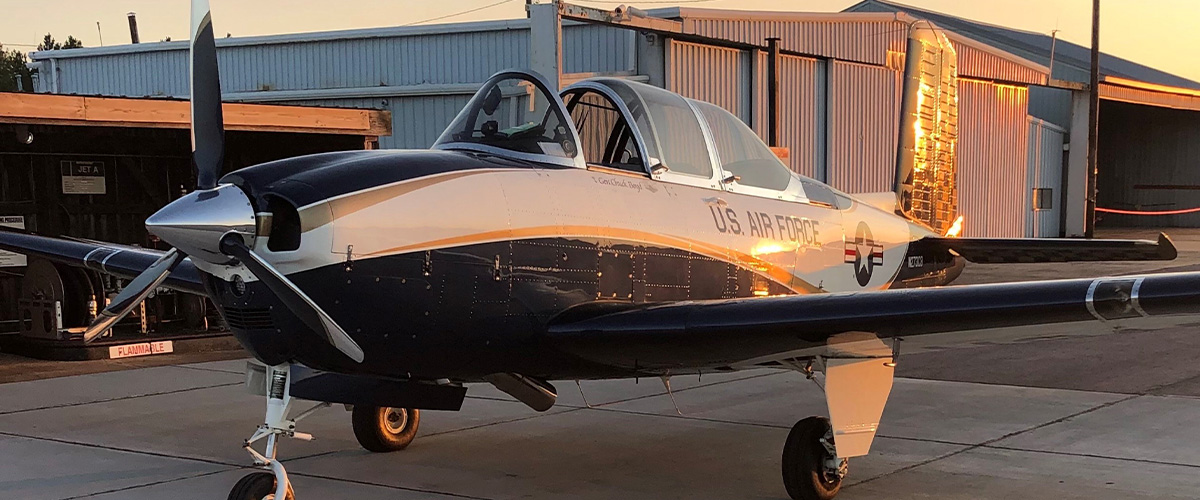

T-34 Mentor
Beechcraft T-34 Mentor
Provided by: Tim Gause
The T-34 was designed and built by the Beechcraft Corp in response to a military request for a new primary trainer for both the Navy and Air Force in the years following WWII. Up until then, the military trained their fledgling aviators in very light aircraft such as the J-3 Cub then advancing to much more complex and powerful aircraft. After mastering basic flying skills in the Cub, the student pilots would move up to the more advanced T-6/SNJ. These were very rugged and dependable trainers, but the military wanted and newer more economical primary trainer which was both easy to fly and easy to maintain. Beechcraft started building their iconic Bonanza in 1947. This was a very successful general aviation design, tailored to the business and pleasure flying operations of small privately owned single engine aircraft.
Easy to fly and easy to maintain, and already a proven design, Walter Beech simply modified the Bonanza to make it a tandem seat aircraft with the purpose of having the student pilot in the front seat and the instructor pilot in the back. Several aircraft corporations put in bids for the new trainer, but Beechcraft handily won the completion winning both the Navy and Air Force contracts. The Air Force chose the "A” model and with only a very few differences, the US Navy went with the "B” model. Production began in 1953 and would run through 1959 with 1904 aircraft being built for the US Military.
This particular T-34 is an A model and was built in 1953 rolling off the assembly line as the 76th T-34 built. When the military decided to move to the next generation of primary trainers, the USAF chose the all jet Cessna T-37 and the Navy stayed with an updated version of the T-34 which added a turboprop and became the T-34C model. All T-34 A and B models were handed over to either military flying clubs, the civil air patrol or sold on the civilian market. Today there are approximately 125 airworthy T-34’s flying today making it a fairly rear aircraft to own and operate.

